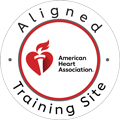When cardiac arrest happens outside a hospital setting, survival often depends on whether someone nearby knows how to respond. Bystander CPR, when performed promptly and correctly, can double or even triple a person’s chance of survival. Despite this life-saving potential, many people hesitate or fail to step in during emergencies. Understanding the common barriers to performing bystander CPR is the first step in breaking them down and improving outcomes for cardiac arrest victims. This article explores these challenges and offers insight into how education, technology, and community initiatives, such as those provided by CPR Indianapolis, can make a real difference.

Knowledge and Training Barriers
One of the biggest obstacles is a lack of knowledge and training. Many people have never taken a CPR class or may have taken one years ago and forgotten the steps. Without current certification or experience, even well-meaning bystanders can feel unsure about how to proceed. Additionally, CPR guidelines have evolved. The introduction of compression-only CPR, recommended by the American Heart Association (AHA) for untrained rescuers, has simplified the process, but confusion remains. Some people mistakenly believe that mouth-to-mouth resuscitation is always required, leading them to avoid stepping in altogether. Others may think CPR is too complex or technical for the average person to perform, when in reality, effective chest compressions can be taught and remembered with a bit of hands-on practice.
Psychological Barriers
Beyond knowledge gaps, psychological barriers play a significant role. Fear of doing something wrong and making the situation worse is one of the most commonly cited reasons for inaction. Even though studies show that attempting CPR—even imperfectly—is—is better than doing nothing, many bystanders worry they could cause injury or be blamed if the person doesn’t survive. Anxiety, self-doubt, and panic can overwhelm even those who have had some training. Legal concerns also deter action. Although Good Samaritan laws protect people who act in good faith during emergencies, not everyone is aware of these protections or feels reassured by them. Emotional shock in high-stress moments can cause even capable individuals to freeze, leading to delayed or missed opportunities for intervention.
Physical and Practical Barriers
Practical challenges also hinder CPR efforts. It’s not always easy to recognize cardiac arrest, especially when the victim is gasping or exhibiting agonal breathing. People may mistake it for fainting, seizures, or other conditions that don’t immediately signal a need for CPR. Once identified, physically accessing the victim and positioning them correctly on a firm surface can be difficult, particularly in crowded, cluttered, or outdoor environments. The physical demands of CPR, such as sustained compressions at a consistent depth and rate, can be taxing, especially for older adults or individuals with health limitations. Environmental factors like extreme temperatures, poor lighting, or noisy surroundings can further complicate matters.
Social and Cultural Barriers
Social and cultural dynamics also influence a person’s willingness to act. The bystander effect, a psychological phenomenon where individuals are less likely to help when others are present, leads people to assume someone else will take responsibility. There’s also discomfort about touching a stranger’s chest, especially when the person is of the opposite gender. Some people worry about accusations of inappropriate behavior, particularly in a culture increasingly aware of personal boundaries. Cultural attitudes toward medical intervention, privacy, and gender roles can impact decisions to assist, especially in diverse communities. Language barriers, especially in multicultural areas, can create confusion when trying to communicate with victims or coordinate with emergency responders.
Specific Concerns About Certain Populations
There are also specific hesitations when it comes to certain populations. Performing CPR on elderly individuals may raise concerns about breaking ribs or causing other injuries, even though these risks are minimal compared to the consequences of inaction. Rescuers may feel unsure about how to adjust their approach for children and infants, who require different compression techniques and depths. Gender-related hesitations—especially involving female victims—can deter some people due to fear of inappropriate contact or social judgment. Individuals who appear visibly ill, injured, or unhygienic may also trigger hesitation, particularly when blood, vomit, or other bodily fluids are present.
Call Us Now
Get the Best CPR Class in Indianapolis Today!
Overcoming Barriers Through Education and Training
Despite these challenges, many of these barriers can be overcome with proper education and training. AHA-certified courses, like those offered at CPR Indianapolis, provide hands-on instruction in a supportive, stress-free environment. Simplified protocols—like compression-only CPR—help build confidence among those who might otherwise hesitate. These classes demystify the process, showing participants that they don’t need to be medical experts to save a life. Regular recertification ensures that skills stay sharp and that people remain informed about the latest techniques and guidelines. A good training program also addresses psychological concerns, offers legal clarity, and includes real-world scenarios to help learners stay calm under pressure.
Technological and Systematic Solutions
Technology and public systems also play a growing role in supporting bystander CPR. Emergency dispatchers are now trained to provide step-by-step CPR instructions over the phone, a critical tool in guiding untrained responders. Public access AEDs (Automated External Defibrillators) are increasingly available in malls, airports, schools, and offices. These devices are designed to be user-friendly, with visual and audio prompts that walk users through the process. Mobile apps, such as PulsePoint, can alert trained bystanders when a nearby cardiac arrest occurs, directing them to the victim and the closest AED. Community education campaigns, public service announcements, and school programs are also helping to normalize CPR training and encourage proactive action.
Conclusion
In summary, multiple factors prevent people from stepping in during a cardiac emergency, from a lack of training and emotional panic to social discomfort and practical limitations. Yet each of these barriers can be addressed. By investing in CPR training and increasing public awareness, communities can empower more people to act quickly and confidently when it matters most. The importance of bystander CPR cannot be overstated—it saves lives.
At CPR Indianapolis, the mission is clear: to provide accessible, high-quality CPR and first aid training to individuals, workplaces, and organizations across the region. Through education, practice, and support, more people can learn to overcome hesitation and step in when someone’s life depends on it. Whether you’re a concerned parent, a teacher, a coach, or simply a good Samaritan, taking a CPR course could make you the person who saves a life. Don’t wait—get trained today and be ready when every second counts.


